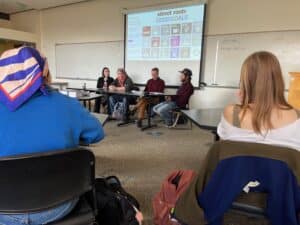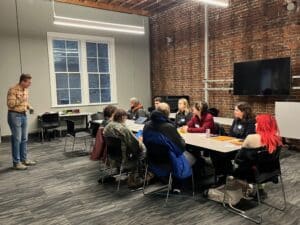BACKGROUND | PROCESS | INSIGHTS
Background
Street Roots is a Portland, OR nonprofit “…that publishes a weekly social justice newspaper sold by people experiencing homelessness and poverty to earn an income,” part of the International Network of Street Papers.
Homelessness is a national issue in the U.S., but Oregon has one of the highest rates in the country. The City of Portland calls homelessness “the humanitarian crisis of our lifetime,” with an increase over recent years and controversial policies to address the problem.
We felt that our students at Lewis & Clark College would benefit from listening to Street Roots vendors, the people who sell Street Roots throughout the city, as they might help us better appreciate the EcoTypes possibility that “many care, just differently.”
Here is some Street Roots website background on vendors:
Ten complementary papers launch their efforts, and then they purchase each paper for a quarter that they sell for $1, keeping all profits and tips. Street Roots works with more than 800 vendors annuallly, and about 75 percent of vendors are unhoused. Our commitment to getting money into people’s pockets is straightforward: Income is an antidote to poverty. There are too many barriers to housing and employment, and we are committed to supporting people aspire to their best futures.
From Street Roots Vendors page
Process
We first welcomed Street Roots staff and vendors to Lewis & Clark campus, so that all students from our class could meet them. Then, a smaller number of students traveled to Street Roots headquarters in Portland to meet other vendors, and to do a new, in-person, interactive EcoTypes survey.
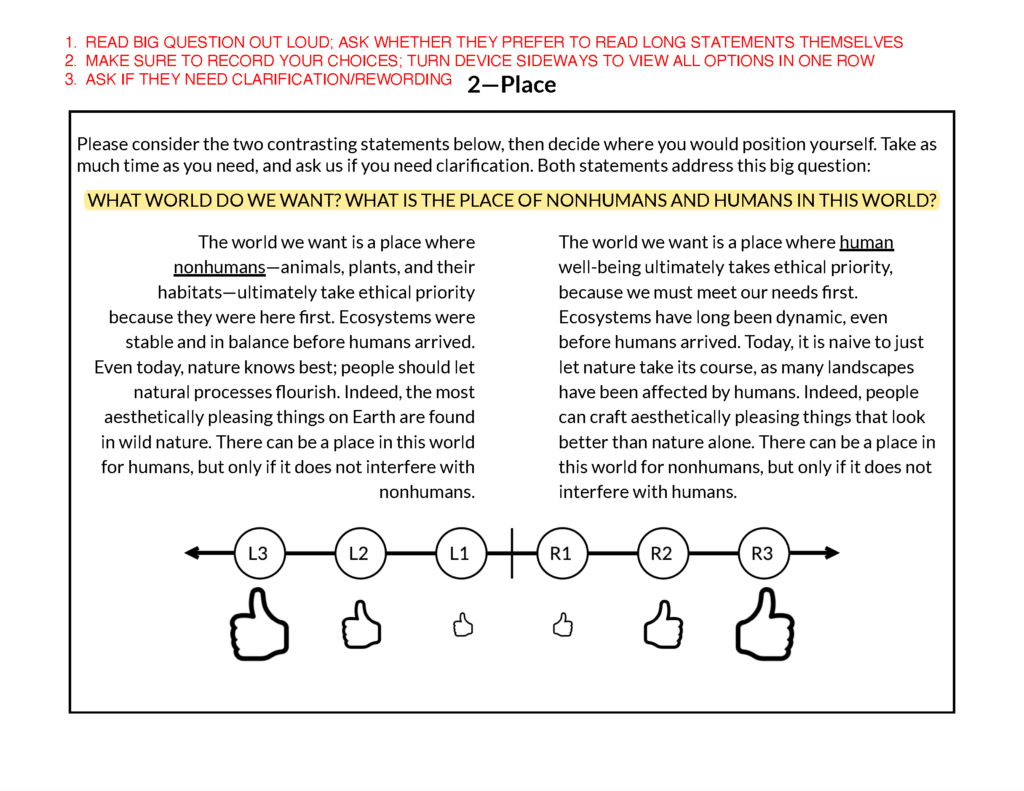
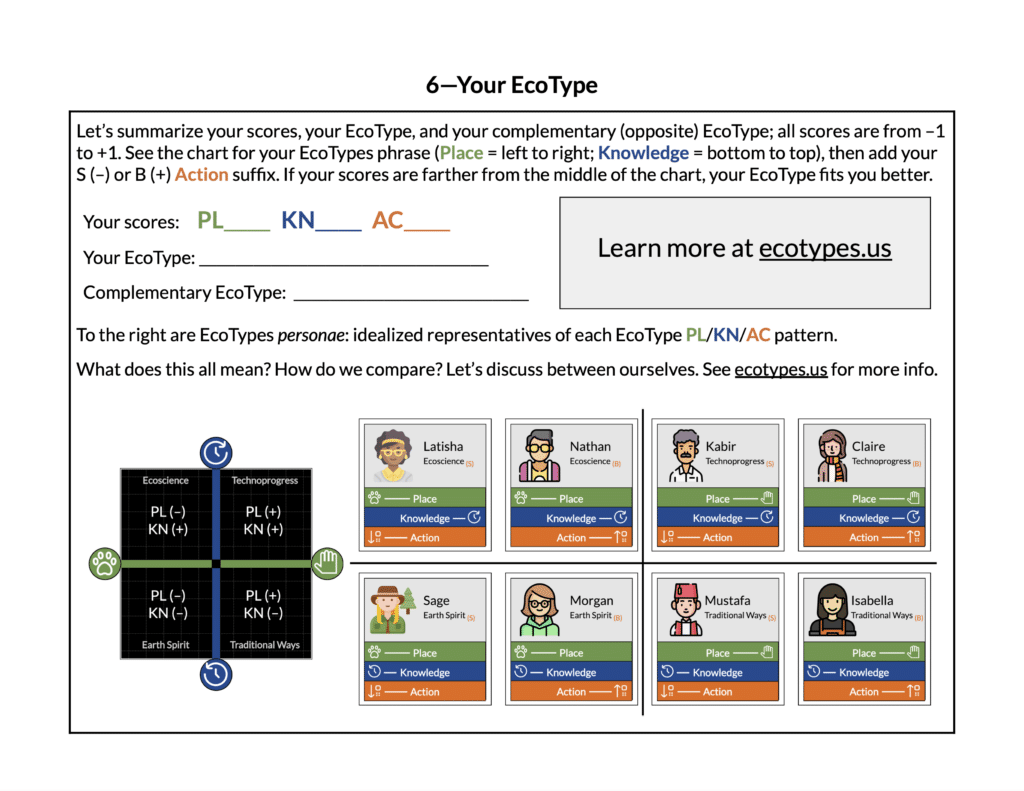
(L) Student version with instructions. (R) Participant summary page. Click to expand.
The in-person survey consisted of a 6-page booklet each participant was given to keep, while the student version included instructions on each page; see samples above. The survey consisted of four sections:
- An introduction to the survey, including data disclosure and consent.
- The Place, Knowledge, and Action narrative pairs of the brief theme survey.
- An SDG priorities page.
- A summary page for the participant to learn their EcoType.
We launched the event with a welcome and introductions by Street Roots staff, who then paired students with Street Roots vendors for a 1:1 interactive survey, which students took alongside their vendors, and entered anonymous data into an online form. Each page provoked good discussion, some commonalities, and interesting differences! The interactive, one-on-one survey process took about 45 minutes total.
At the end we collectively reflected on the experience, what participants learned about each other, and their main takeaways.
Insights
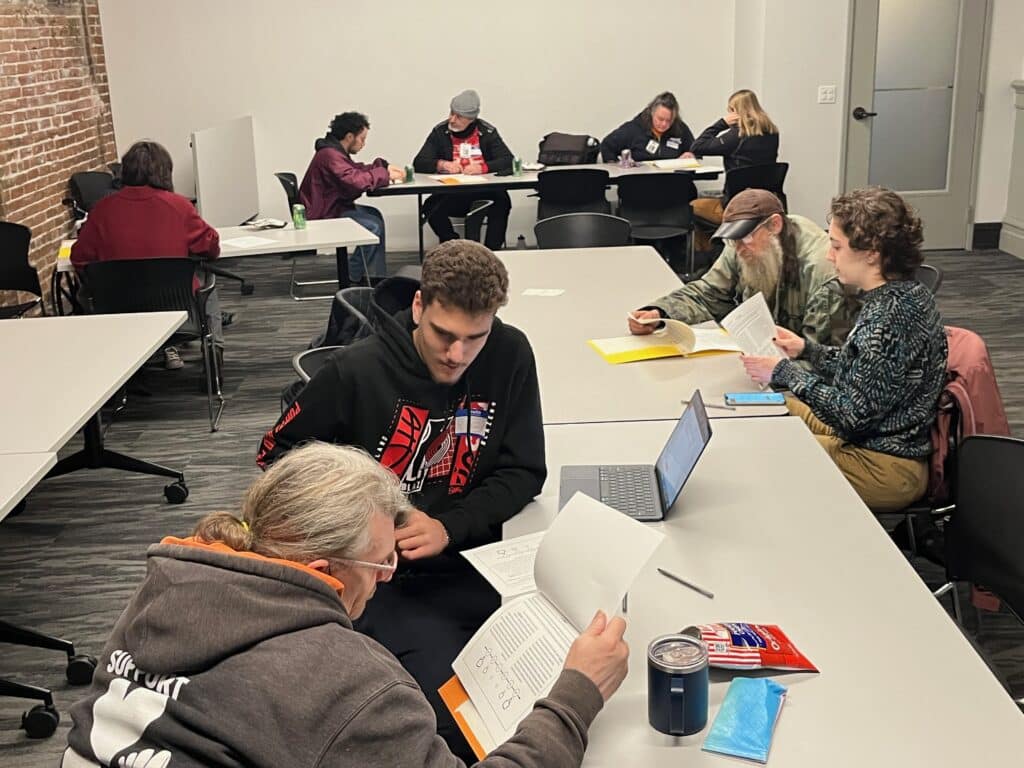
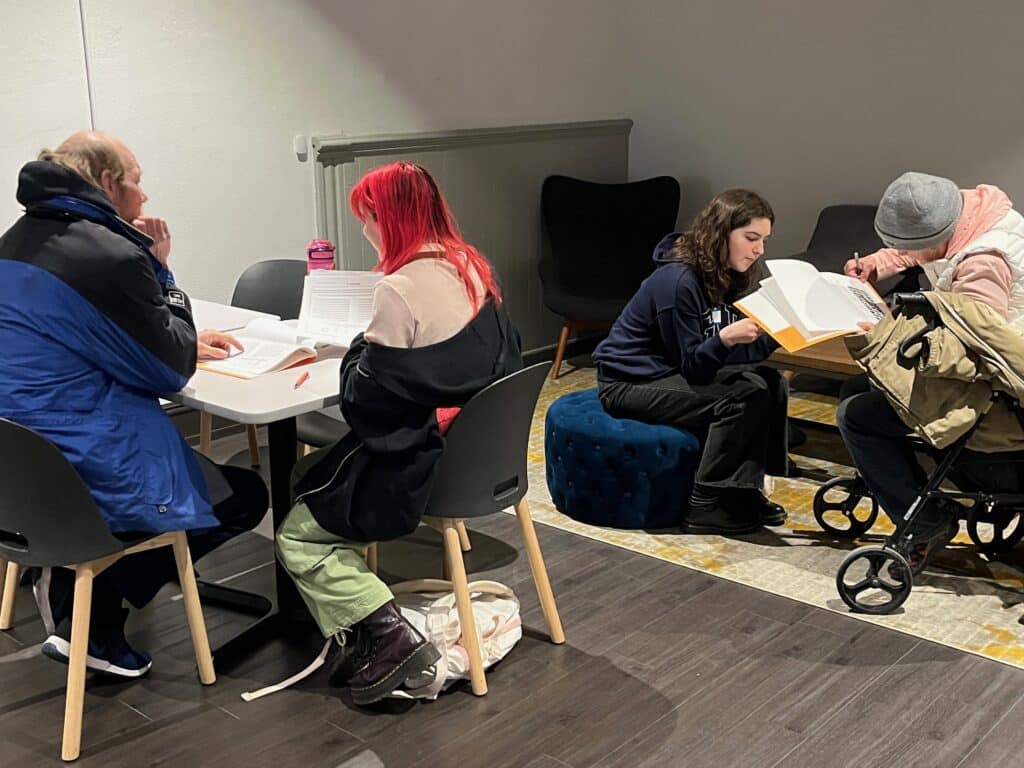
Students doing 1:1 dialogic EcoTypes surveys with Street Roots vendors.
What rich experience our students had! They got an opportunity to hear many stories from vendors, some about the lives they lived, and others more directly connected to the survey pages.
These few participants were not necessarily representative of all Street Roots vendors. And as one might imagine, they each approached the big questions of Place, Knowledge, Action, and SDG priorities in their own way. But there were two quite interesting commonalities:
- Knowledge theme. Among valid completions, there was a consistently greater trust among Street Roots vendors in old vs. new Knowledge. Why might appeals to traditional religion, Indigenous wisdom, or other sources of old Knowledge resonate with Street Roots vendors? Students reported personal experiences among vendors that resonated with old Knowledge (e.g., among Indigenous peoples or with “old ways”), and other experiences that conveyed distrust in science and technology. One can, without too much difficulty, imagine that people who routinely live outside the societal safety net may trust modernity and new Knowledge far less than those of us who routinely benefit from science and technology. For all its strengths, this is a shadow that advocates of new Knowledge may wish to keep in mind.
- SDG priorities. As a background, here were our students’ top three SDG priorities, in order: (i) Climate action; (ii) No poverty, and (iii) Zero hunger / Peace, Justice, and Strong Institutions (tie). The top three SDG priorities of vendors, however, were (i) No poverty / Clean water and sanitation (tie), (ii) Affordable and Clean Energy, and (iii) Zero hunger / Decent work and economic growth / Life on land (tie). You can see some overlap between students’ and vendors’ global priorities!…and important differences, too: as an example, not one vendor mentioned students’ top priority of climate action. Overall, vendors’ global priorities may resonate with what they think about in their daily lives—reminding us that our global priorities may reflect the same, and that “many care, just differently” has a reason.
Here is a comparison of all spring 2024 MCJD community interactions.
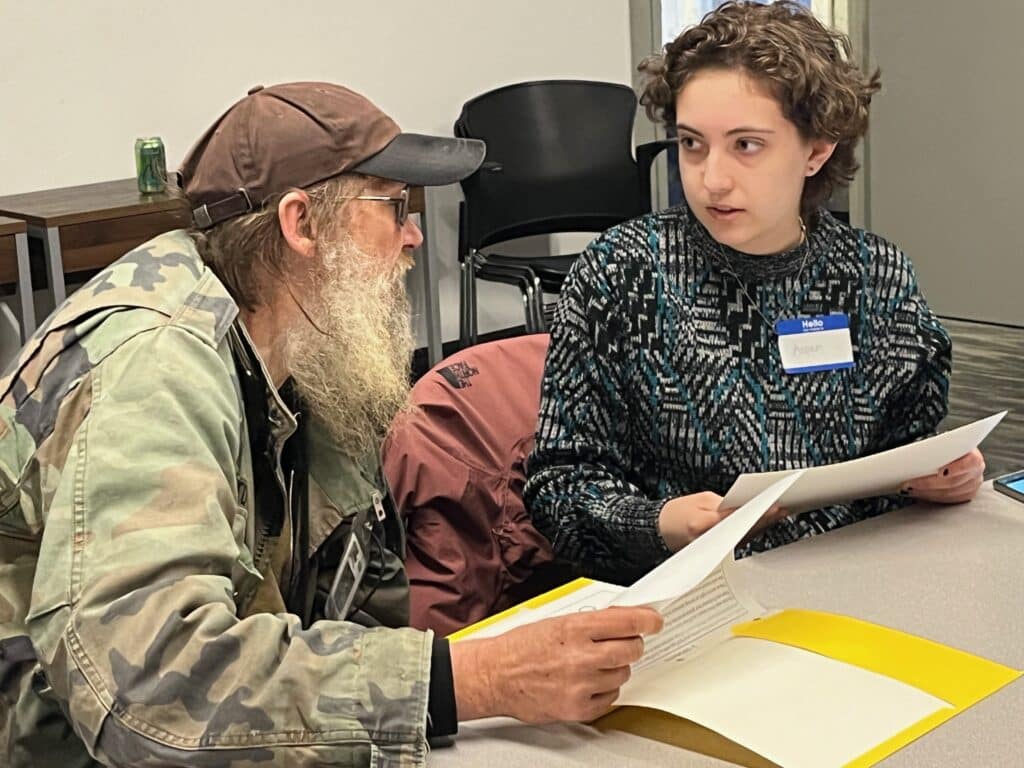
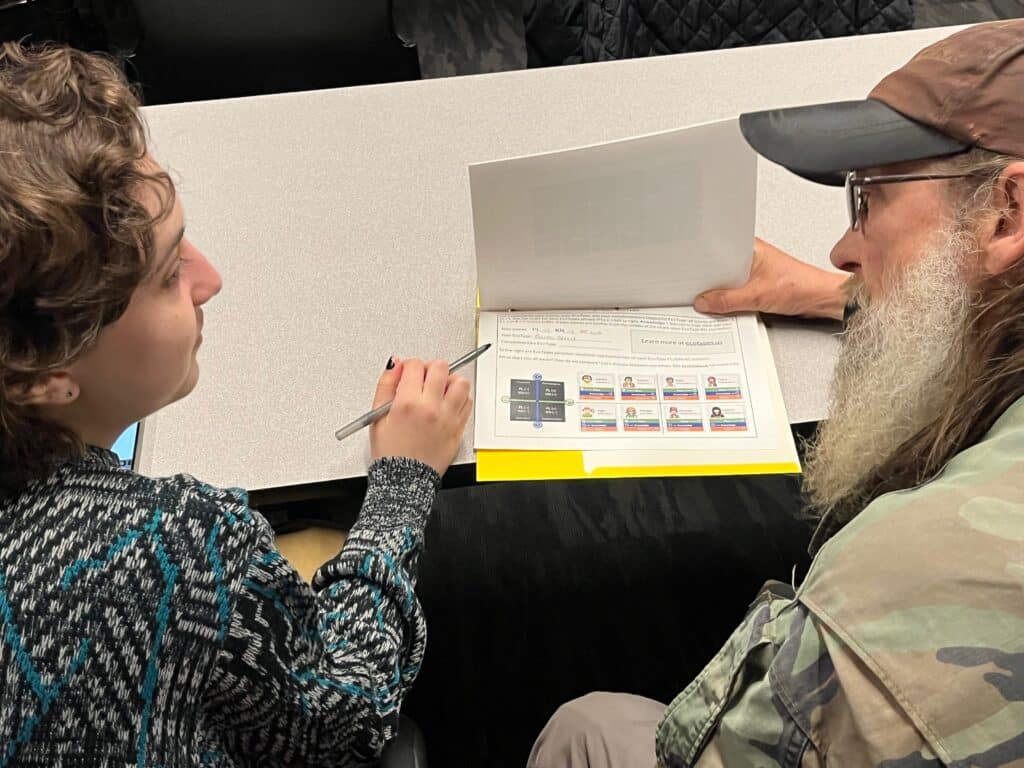

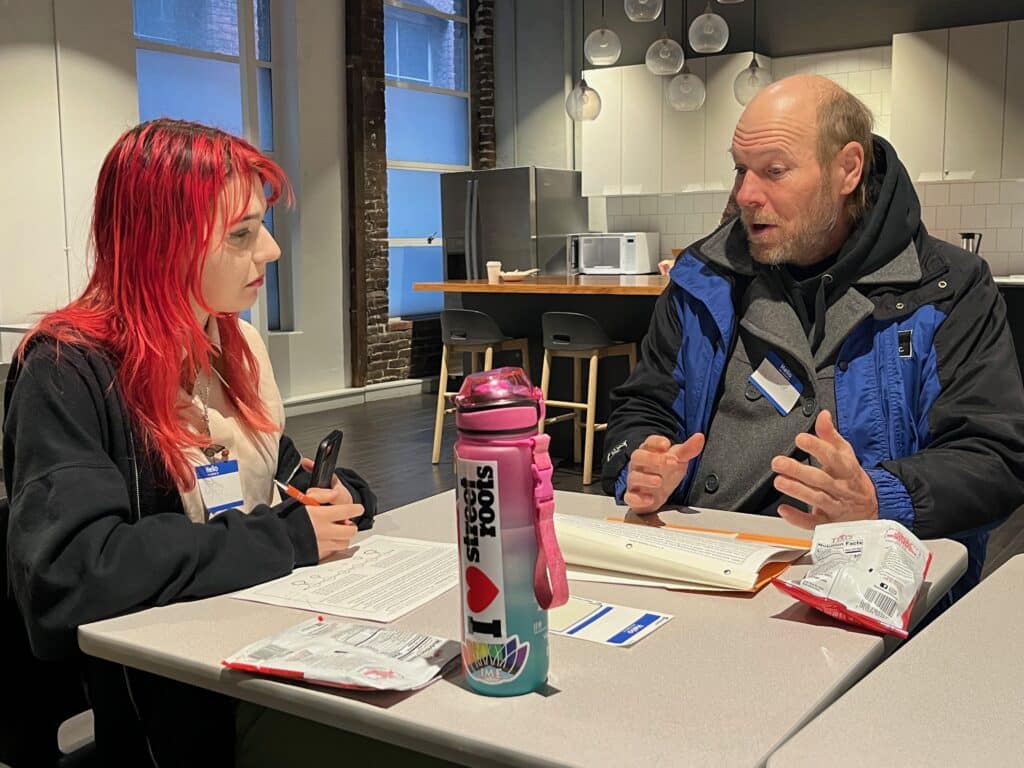
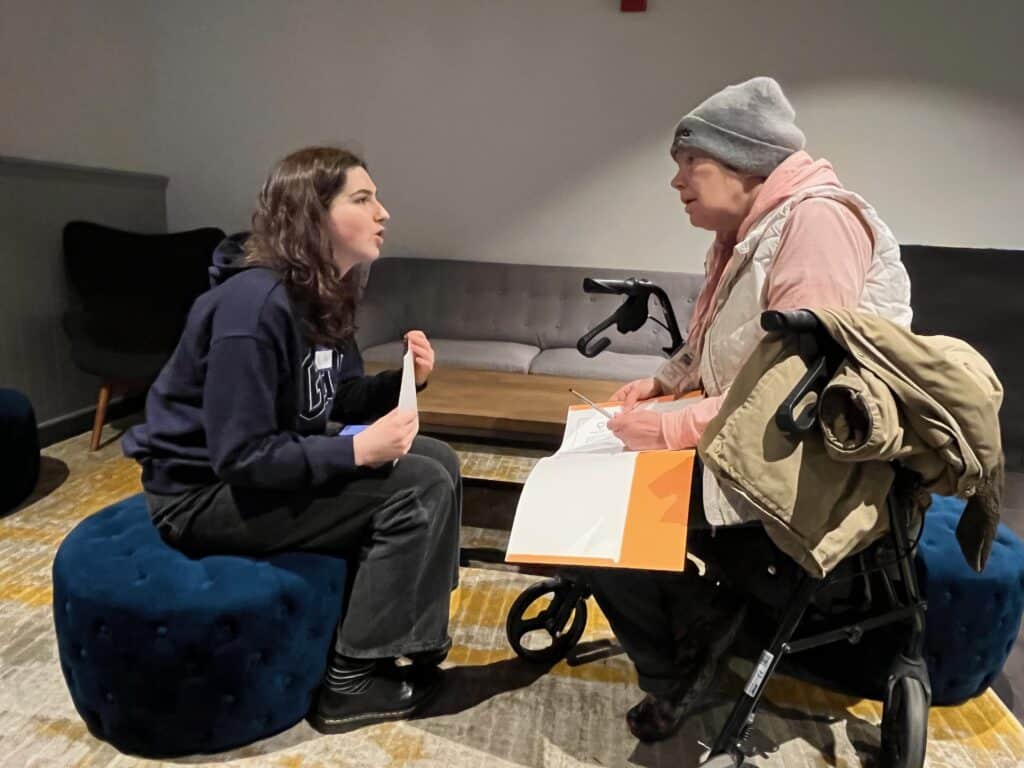
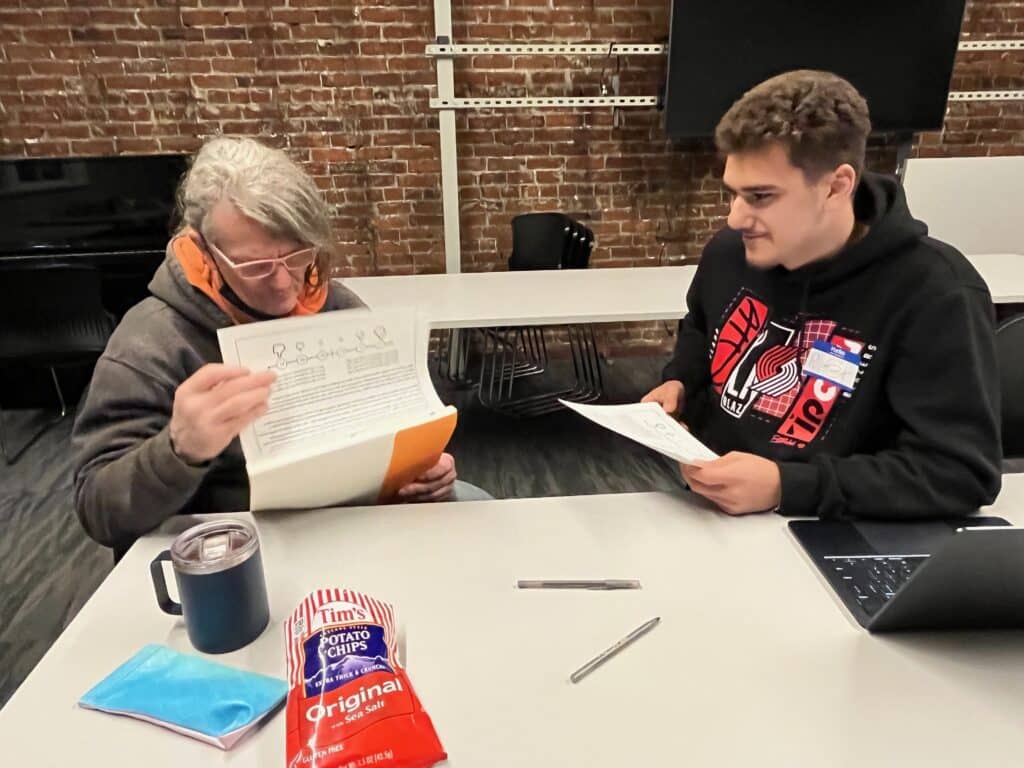
We appreciate Street Roots for its effort to create change for good in Portland. And we appreciate these Street Roots vendors for giving us some valuable time to offer our students insights on EcoTypes that they might never learn from their classmates.
